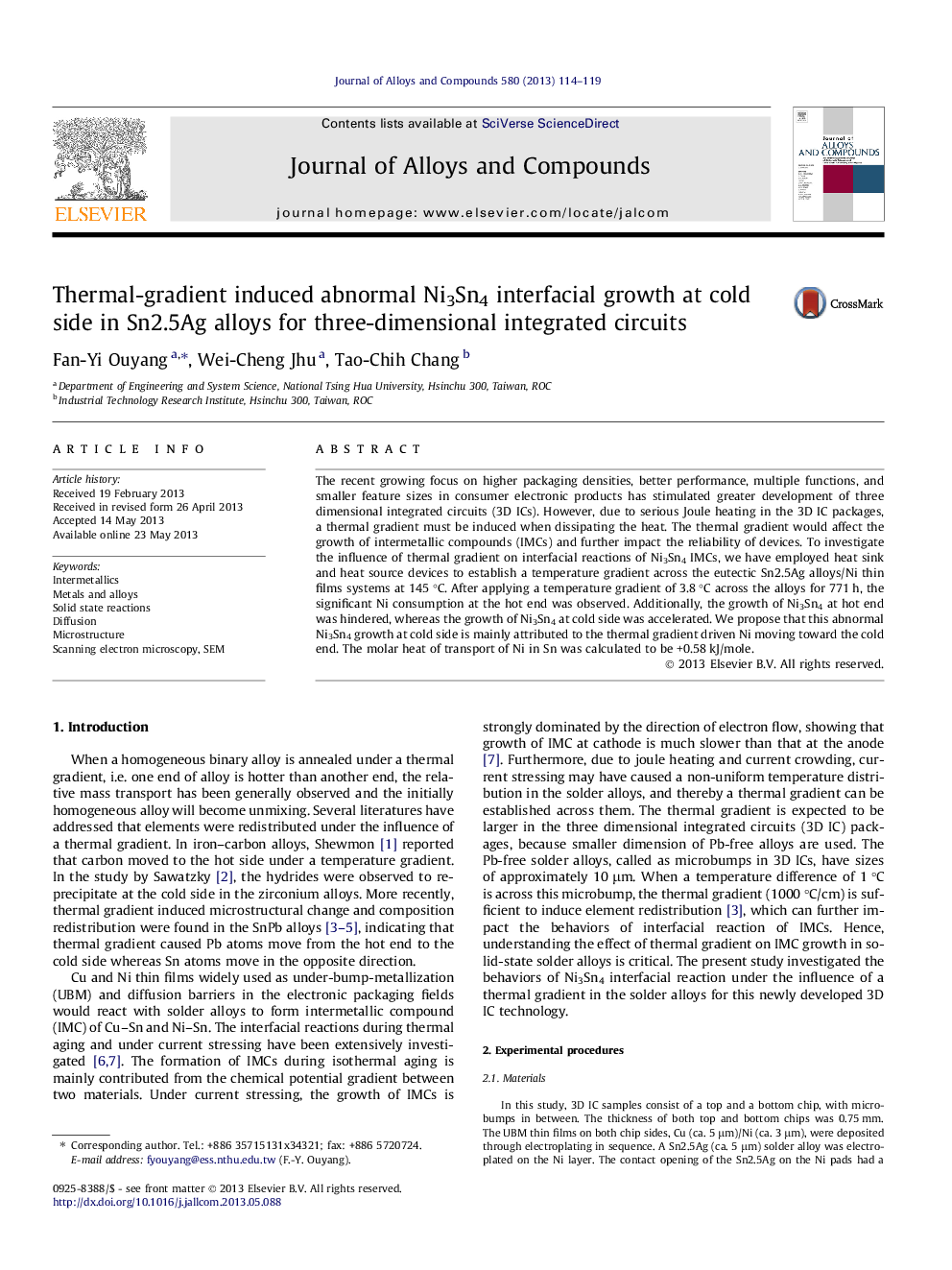| Article ID | Journal | Published Year | Pages | File Type |
|---|---|---|---|---|
| 1613177 | Journal of Alloys and Compounds | 2013 | 6 Pages |
Abstract
The recent growing focus on higher packaging densities, better performance, multiple functions, and smaller feature sizes in consumer electronic products has stimulated greater development of three dimensional integrated circuits (3D ICs). However, due to serious Joule heating in the 3D IC packages, a thermal gradient must be induced when dissipating the heat. The thermal gradient would affect the growth of intermetallic compounds (IMCs) and further impact the reliability of devices. To investigate the influence of thermal gradient on interfacial reactions of Ni3Sn4 IMCs, we have employed heat sink and heat source devices to establish a temperature gradient across the eutectic Sn2.5Ag alloys/Ni thin films systems at 145 °C. After applying a temperature gradient of 3.8 °C across the alloys for 771 h, the significant Ni consumption at the hot end was observed. Additionally, the growth of Ni3Sn4 at hot end was hindered, whereas the growth of Ni3Sn4 at cold side was accelerated. We propose that this abnormal Ni3Sn4 growth at cold side is mainly attributed to the thermal gradient driven Ni moving toward the cold end. The molar heat of transport of Ni in Sn was calculated to be +0.58 kJ/mole.
Keywords
Related Topics
Physical Sciences and Engineering
Materials Science
Metals and Alloys
Authors
Fan-Yi Ouyang, Wei-Cheng Jhu, Tao-Chih Chang,
